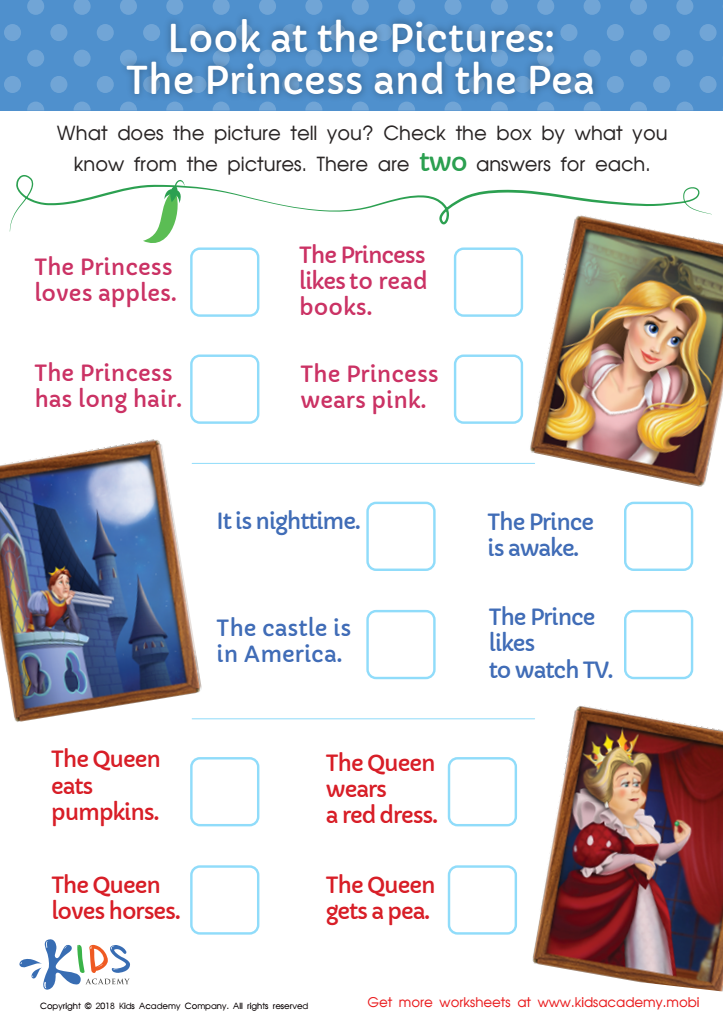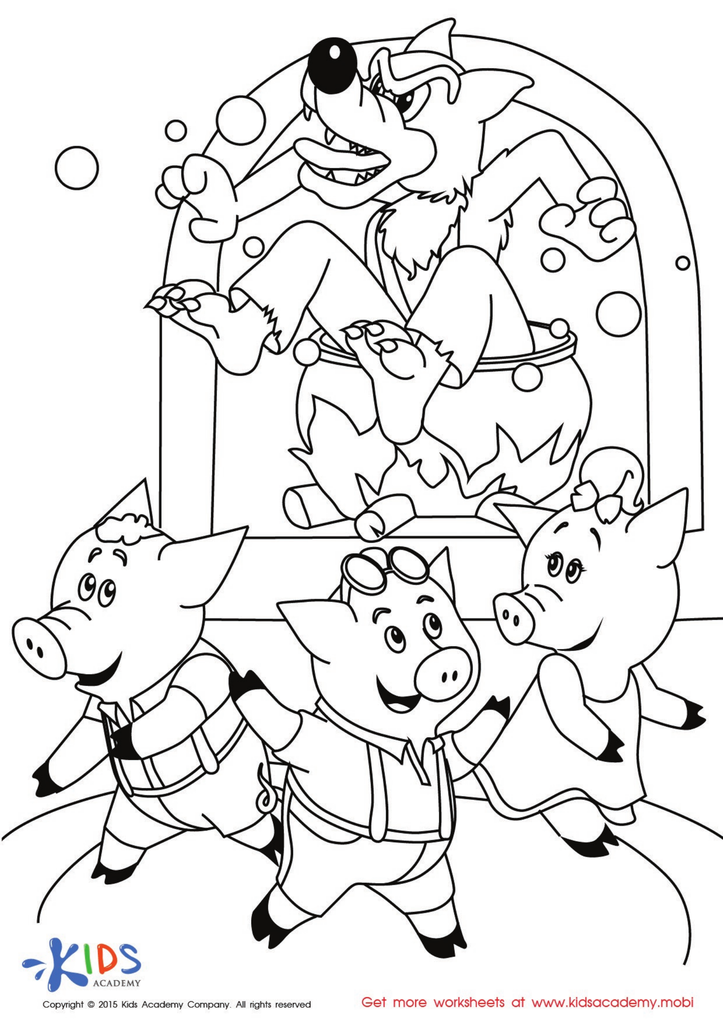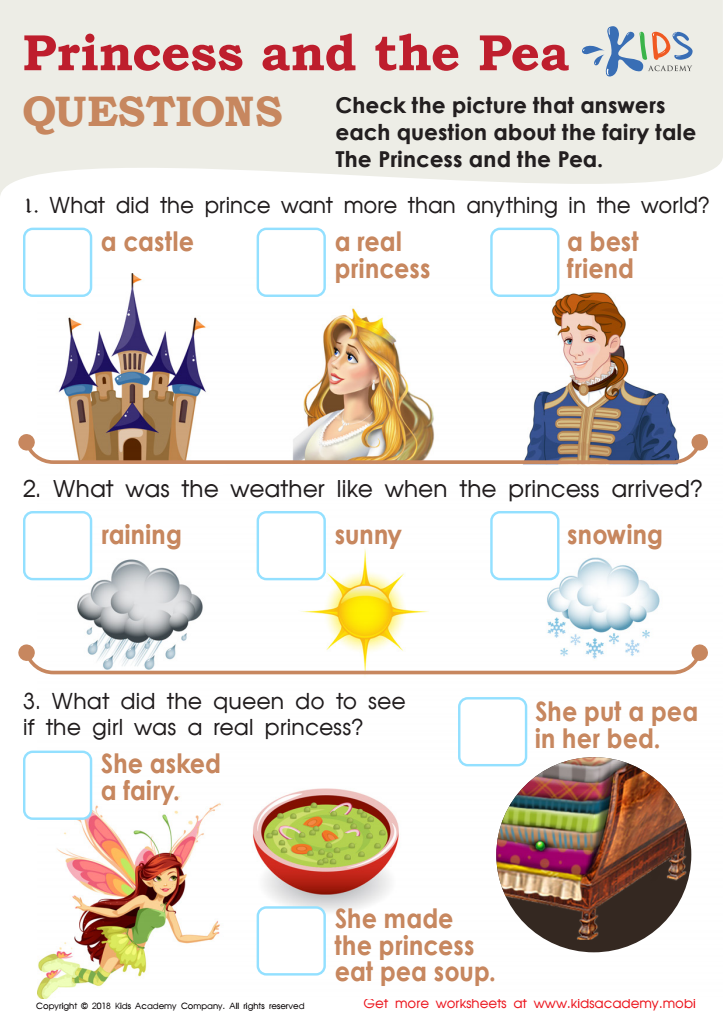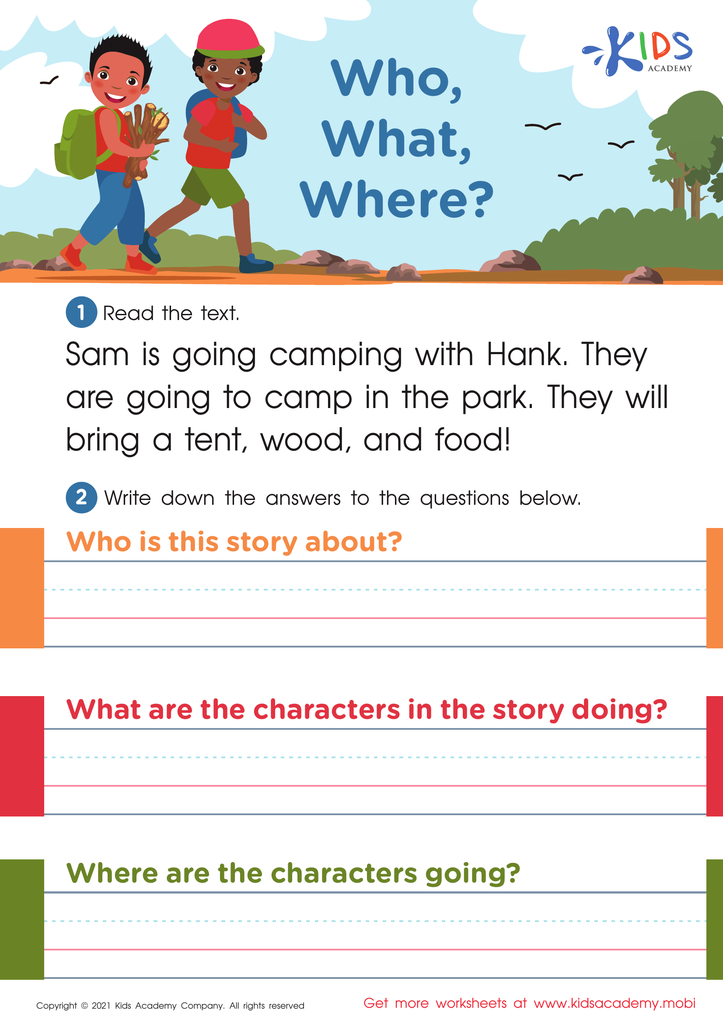Story sequencing Worksheets for Ages 6-8 - Page 2
29 filtered results
-
From - To


Look at the Pictures: The Princess and the Pea Worksheet


The Three Little Pigs and The Big Bad Wolf Printable


Princess and the Pea Questions Worksheet


The Boy Who Cried Wolf Part 2 Worksheet


Who, What, Where? Worksheet
Story sequencing is a crucial skill for children ages 6-8, serving as a foundational component in their literacy development. At this age, children are learning to read and write independently, and understanding how to sequence events helps them make sense of narratives. Teachers and parents should care about this skill because it enhances comprehension, cognitive development, and critical thinking.
When children can identify the order of events in a story, they improve their ability to summarize and predict outcomes, making reading more engaging and interactive. This skill fosters better retention of information and encourages children to delve deeper into storytelling, sparking their imagination and creativity.
Furthermore, strong sequencing skills lay the groundwork for writing. When children can outline their ideas effectively, they organize their thoughts clearly, making it easier to express themselves. It also aids in understanding cause and effect, developing logical reasoning essential for problem-solving in mathematics and science.
For social emotional learning, being able to sequence stories aids in understanding others’ perspectives, empathy, and social narratives. By prioritizing story sequencing, parents and teachers contribute significantly to a child's holistic development, fostering a love for reading and better preparation for future academic challenges.

 Assign to My Students
Assign to My Students








.jpg)
.jpg)










